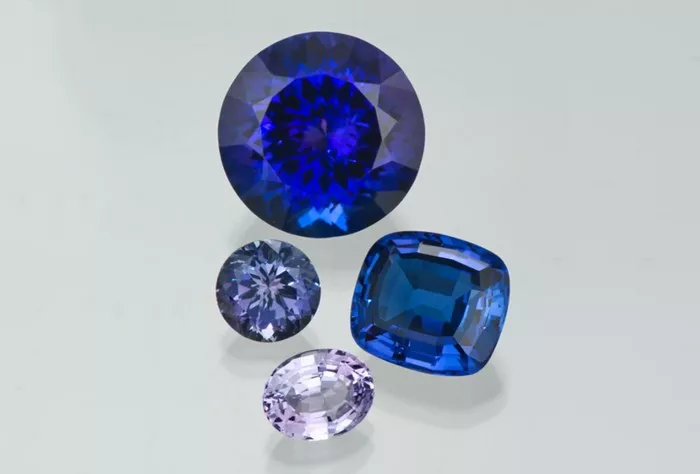Tanzanite is a stunning gemstone renowned for its mesmerizing blue-violet hue and rarity. Discovered relatively recently in Tanzania in the 1960s, tanzanite quickly captured the attention of gemstone enthusiasts and jewelry connoisseurs worldwide. However, the question remains: Are tanzanites expensive? In this article, we’ll explore the factors that influence the price of tanzanite and examine whether it is considered a costly gemstone.
Introduction to Tanzanite
Tanzanite is a variety of the mineral zoisite and is renowned for its captivating blue-violet color, which can range from pale lavender to deep sapphire blue. Its unique coloration is due to the presence of trace amounts of vanadium within the crystal structure, which causes tanzanite to exhibit pleochroism—a phenomenon where the gemstone displays different colors when viewed from different angles.
The story of tanzanite’s discovery is as remarkable as the gemstone itself. In 1967, a Masai tribesman stumbled upon transparent blue crystals in the foothills of Mount Kilimanjaro in northern Tanzania. Recognizing the potential value of these stones, miners began extracting tanzanite from the earth, leading to the establishment of the world’s only known tanzanite deposit.
Since its introduction to the global market in the late 1960s, tanzanite has gained popularity for its rarity, beauty, and unique color. However, the question of whether tanzanites are expensive is subjective and depends on various factors.
Factors Influencing the Price of Tanzanite
Several factors influence the price of tanzanite, including its color, clarity, carat weight, cut, and origin. Let’s examine each of these factors in more detail:
Color: The most critical factor in determining the value of tanzanite is its color. Vivid, saturated hues of blue-violet are the most sought after and command the highest prices. Stones with a deep, intense coloration are considered more valuable than those with lighter or less saturated tones. Exceptional tanzanites may exhibit a pure blue color with no hints of violet or gray.
Clarity: Like all gemstones, tanzanite can contain internal characteristics known as inclusions. While minor inclusions are acceptable and may even be expected in tanzanite, stones with excellent clarity and transparency are more valuable. Eye-clean tanzanites with minimal visible inclusions command higher prices than heavily included stones.
Carat Weight: As with other gemstones, the size of a tanzanite can significantly impact its price. Larger tanzanites are rarer and thus more valuable than smaller stones. However, the price per carat tends to increase exponentially as the carat weight of the tanzanite increases, meaning that larger stones can be significantly more expensive on a per-carat basis.
Cut: The cut of a tanzanite can enhance its beauty and maximize its optical properties. Well-cut tanzanites exhibit brilliance, sparkle, and a pleasing overall appearance. Popular cuts for tanzanite include oval, cushion, and emerald cuts, although other fancy shapes may also be available. A high-quality cut can add value to a tanzanite by maximizing its color and minimizing any potential color zoning or extinction.
Origin: Tanzanite’s rarity is further accentuated by its limited geographic origin—Tanzania. While tanzanite has been discovered in other parts of the world, including Kenya, the majority of commercially available tanzanite comes from mines near the Merelani Hills in Tanzania. Tanzanites from this region are highly prized for their exceptional color and quality.
Are Tanzanites Expensive?
Given the factors that influence the price of tanzanite, it’s clear that this gemstone can range in price from relatively affordable to exceedingly expensive. Tanzanites with exceptional color, clarity, carat weight, and cut can command high prices in the gemstone market, particularly for top-quality stones over five carats in size.
However, tanzanites are also available in a range of qualities and price points to suit various budgets and preferences. Smaller tanzanites with lighter coloration, lower clarity, or less desirable cuts may be more affordable for those seeking a beautiful gemstone without breaking the bank.
In recent years, the price of tanzanite has been influenced by factors such as supply and demand dynamics, economic conditions, and fluctuations in the gemstone market. While tanzanite prices have historically shown steady growth, occasional fluctuations may occur due to external factors such as changes in mining regulations or geopolitical events.
Ultimately, whether tanzanites are considered expensive depends on individual perspectives and priorities. For some, the rarity and beauty of tanzanite justify its higher price tag, while others may prefer more affordable alternatives or prioritize other factors when choosing a gemstone.
Conclusion
In conclusion, tanzanite is a captivating gemstone prized for its breathtaking blue-violet color and rarity. While tanzanites can range in price from relatively affordable to exceedingly expensive, their value is influenced by factors such as color, clarity, carat weight, cut, and origin. Whether tanzanites are considered expensive depends on individual preferences, budgetary constraints, and market conditions. Regardless of price, tanzanite continues to captivate gemstone enthusiasts worldwide with its unparalleled beauty and allure.


